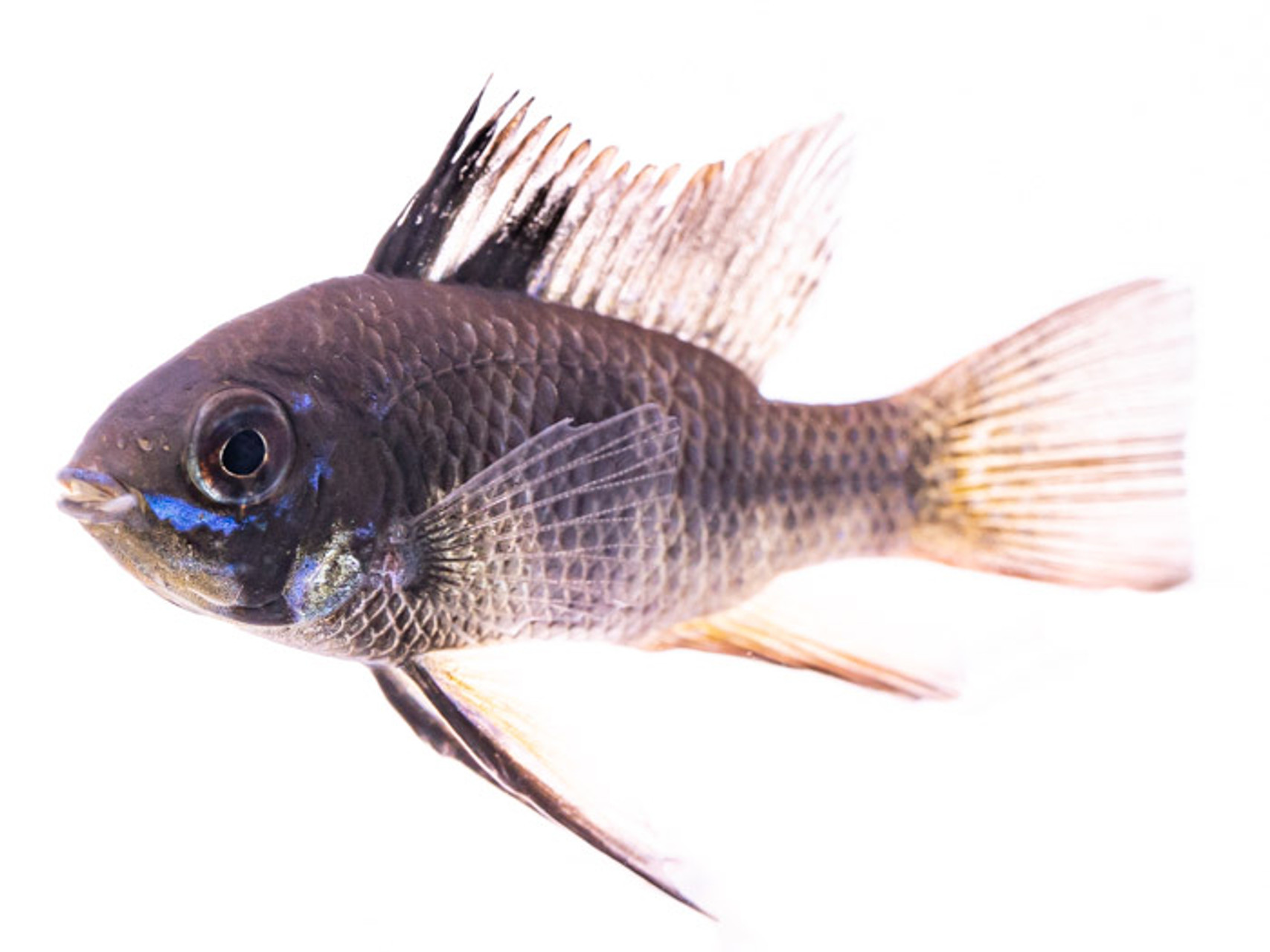Cichlids for the Community and Planted Tank: The Rams

The ram cichlid (Mikrogeophagus ramirezi, previously Paplilochromis ramirezi) is a popular South American dwarf member of the Cichlidae family that is extremely popular in freshwater aquaria, and in particular make a phenomenal display in planted tanks. Despite being included in many amazonian biotopic displays, the ram doesn’t actually occur in the amazon basin. Specifically, they are endemic to the Orinoco river basin in Columbia and Venezuela. Discovered by Myers and Harry in 1948, this fish wasn’t properly described until as recently as 1998 by Dr. Sven O Kullander, Senior Curator of the Department of Vertebrate Zoology at the Natural History museum of Sweden. Before being properly described, they were thought to belong to the Apistogramma genus. While this species is purposely bred for the ornamental trade they are not listed as threatened and can be harvested sustainably. This is all to say that automatic shunning wild caught specimens is not necessary on principle. You may also run into this dwarf cichlid under a multitude of common names and colormorphs: Butterfly Cichlid Dwarf Cichlid, Ram, Ramirezi Ram, Blue Ram and the Singapore Ram.
If that’s not confusing enough to the novice, selective and interbreeding, much like many other cichlids and live bearers, have led to the inclusion of many other variant progeny most of which are exclusive to the ornamental aquarium trade. These include but are not limited to: The Black Ram, Balloon Ram, German Blue Ram, German Ram, Electric Blue Ram Cichlid, and the Gold German Ram. There is one naturally occurring color morph known as the golden ram.
One of the reasons the ram and its variants are so popular are their vibrant colors. The naturally occurring color morph has a yellow area that takes up approximately 30-40% of the body starting at the head. This is combined with the rest being a whitish blue to blue, excluding a black spot on the body and yellowing translucent fins highlighted by black rays. Mature females also tend to exhibit pink markings along the belly. Males typically top off at 2-2.5” though specimens of 3” have been collected.
Color and captive variants alone isn’t the only reason this is such a popular aquarium fish unlike many others in the Cichlidae family. Rams make great community aquarium denizens for both other peaceful cichlids and non-cichlids that prefer a similar water quality.
In the home aquarium, ram husbandry is admittedly a little more specific and sensitive than their African counterparts or even some of the larger new world cichlids. Specifically, they are extremely touchy in terms of ph shifts, while they have a range of 5-7.1; this is a wide range and the aquarist should zero in on a target ph and not let it dramatically swing. Drift wood from Ecoscape by Aquatropic would assist greatly in matinaining ph as well as give the aquarium water a natural tannin stain emulating the rams natural home. Java moss would assist with this as well. Temperature should also be kept balanced and not allowed to fluctuate despite being able to adjust to a range between 72 and 79 degrees Fahrenheit. The carbonate hardness, or KH, should also remain constant between 5 and 7.5. To maintain these levels its recommended that you use RODI water and a well tested and proven buffer as well as 10-20% water changes a week. Rams are omnivores and need both protein and vegetable matter in their diet. Captive raised rams are already used to frozen or dry foods and will readily take thawed frozen meats such as brine shrimp and blood worms. Wild counterparts may take longer to adjust to this as they feed by sifting through soft muddy substrates. Foods that sink, such as pellets or even roe (fish eggs) of a larger fish, can be ideal in enticing new specimens to eat. Once established, they should be fed a carried diet between 2 and 5 times a day.
The aquarium itself should be a minimum of 10-15 gallons for a pair but for a group or a mixed community tank 30-40+ gallons are better, especially if its a densely planted tank. Tank mates should be non-boisterous; rams may starve with faster moving fish that outcompete or bully them for food.
While breeding is a topic in and of itself, Rams do form monogamous pairs when mating and may establish a territory becoming more aggressive. If this occurs in your system, the pair may need to be separated or removed to maintain your community balance. Some quick notes about breeding: Rams are mouth brooders incubating their young. Floating plants as well as natural ph and an elevated temperature can entice sexually mature rams into breeding.
Compatible tank mates include but are not limited to: dwarf gouramis, discus, dwarf rainbowfish, Cory cats, plecos, and many tetras such as the neon. If you’re looking to add a dash of color and personality do your planted or community aquarium, this fish will impress even the most seasoned aquarists, marine or freshwater.